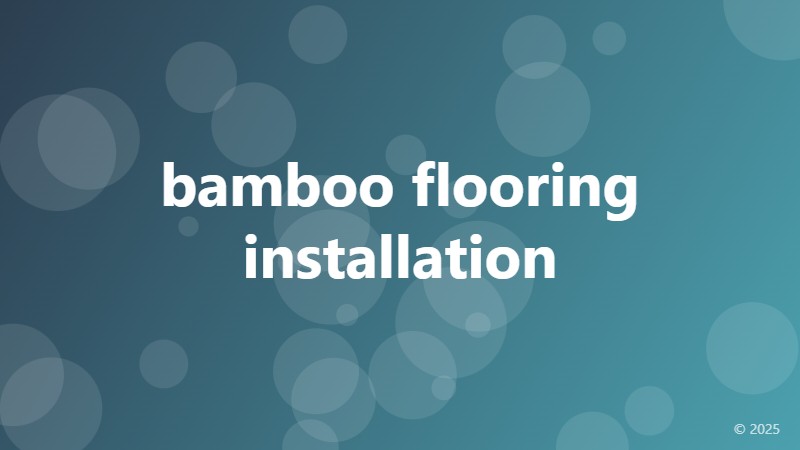bamboo flooring installation

Why Choose Bamboo Flooring Installation for Your Home?
When it comes to choosing the perfect flooring for your home, there are numerous options available in the market. However, if you're looking for an eco-friendly, durable, and aesthetically pleasing option, bamboo flooring installation is an excellent choice. Bamboo flooring has gained popularity in recent years due to its unique characteristics and benefits.
Benefits of Bamboo Flooring Installation
One of the primary advantages of bamboo flooring installation is its eco-friendliness. Bamboo is a highly renewable resource that can be harvested in as little as three to five years, compared to traditional hardwoods that can take decades to mature. This makes bamboo flooring an excellent option for environmentally conscious homeowners.
Bamboo flooring is also incredibly durable and can withstand heavy foot traffic. It's resistant to scratches, dents, and fading, making it an ideal choice for families with pets or young children. Additionally, bamboo flooring is naturally resistant to moisture, making it perfect for kitchens, bathrooms, and laundry rooms.
Types of Bamboo Flooring Installation
There are several types of bamboo flooring installation options available, each with its unique characteristics and benefits. Some of the most popular types of bamboo flooring include:
• Engineered Bamboo Flooring: This type of flooring is made by layering bamboo fibers in different directions, making it less prone to shrinking and expanding than solid hardwood flooring.
• Solid Bamboo Flooring: This type of flooring is made from solid bamboo planks, offering a more traditional hardwood look and feel.
• Strand Woven Bamboo Flooring: This type of flooring is made by weaving bamboo fibers together, creating a highly durable and resistant flooring option.
How to Install Bamboo Flooring?
Installing bamboo flooring is a relatively straightforward process that can be done by a DIY enthusiast or a professional. Here are the general steps involved in bamboo flooring installation:
1. Prepare the subfloor by ensuring it's level, clean, and dry.
2. Lay down a layer of underlayment material, such as foam or cement-based underlayment.
3. Begin installing the bamboo flooring planks, starting from the center of the room and working your way outward.
4. Use a tapping block and a hammer to tap the planks into place, ensuring a snug fit.
5. Leave a 1/4-inch gap between the flooring and the wall to allow for expansion and contraction.
Conclusion
Bamboo flooring installation is an excellent choice for homeowners looking for a durable, eco-friendly, and aesthetically pleasing flooring option. With its numerous benefits and types of flooring options, bamboo flooring is sure to meet the needs of any homeowner. By following the simple installation process, you can enjoy the beauty and benefits of bamboo flooring for years to come.